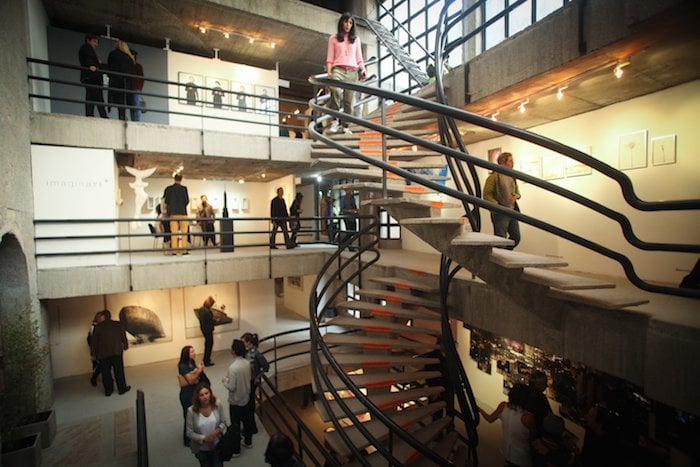
Breathing with art again
Tatiana Rais tells how she has brought back to life an abandoned theatre in the centre of Bogotá.
Imagine walking into a contemporary ruin, a space so large it is humbling, so abandoned it is dumbfounding. Now imagine this ruin is a sixty-year-old theatre located right in the heart of La Candelaria, the historic centre of Columbia’s capital city Bogotá. The potential is overwhelming. Over the past 60 years, the building has gone by many different names. Teatro Odeón in the 1940s, Teatro El Buho in the 1950s, Teatro Popular de Bogotá until the late 1990s. At the start of the new millennium, for more than ten years, it was an abandoned building, home to nothing but pigeons, homeless drifters and forgotten memories of a once-brilliant cultural past.This was my experience three years ago when I first walked in to what is now known as Espacio Odeón: Centro Cultural.
In 2011, thanks to the vision and generosity of our owners, my team and I were able to construct an idea, a project that has at its core the recuperation of this iconic building through contemporary art installations. The event that started everything was Odeón, a contemporary art fair in October of 2011. It was created to give emerging contemporary art galleries and other non-traditional exhibition spaces the opportunity to enter the Colombian art market. While Bogotá has an institutional art fair (ArtBO), we felt there was the need to showcase more emerging artists and galleries, and provide them with a platform to formally enter the art market. In addition, we invited three artists to create site-specific installations in other areas of the building, mixing the commercial with the avant-garde.
It was an abandoned building, home to nothing but pigeons, homeless drifters and forgotten memories of a once-brilliant cultural past
The fair now takes place once a year in October during what has become known as Bogotá Art Week. Colombia has been gaining wide recognition for its art scene. Colombian artists participate in international galleries, local galleries participate in the world’s most important art fairs, and curators are being assigned positions in prestigious institutions. All of this creates for a very interesting moment in Bogotá’s art history, and an excellent opportunity for cultural entrepreneurs. In the past four years alone, another three alternative fairs have cropped up, consolidating Bogotá as a capital of contemporary art in Latin America.
Since the first version of Odeón, we have had a continuous artistic programme which has largely consisted of inviting emerging and mid-career artists from around the world to create site-specific installations. Working primarily in the visual and performing arts, artists have brought pieces that tie their own creative process to the building’s unique architecture and history, resulting in works that simultaneously stand out from the building and enter into dialogue with its different spaces.
Accustomed to working in neutral spaces like galleries and museums, artists find new challenges in creating pieces for Espacio Odeón. We have held video-art installations that take over the entire ceiling of the abandoned theatre, interactive exhibits where the audience is invited to partake in the creation process, and most recently, a theatre performance which invited audiences to wander around the entire 2,000 square metre structure and become immersed in the universe of dreams.
Part of our mission is to make Espacio Odeón an inclusive space where people from all walks of life can have the opportunity to see and experience unique artistic events. By making the majority of our exhibitions free, we have been able to immerse our community in art, encouraging the people in our neighborhood to get involved with the artistic process, giving them the opportunity to hear first hand from artists, curators and other renowned cultural leaders.
A new initiative this year has been the recuperation of the public space around the theatre. Twice a month, we organise free film screenings on the façade of the building and about once a month we organise free concerts by local musicians. The purpose of these is twofold: we want to reach out beyond the interior walls of Espacio Odeón and it serves as a great marketing technique to get locals involved and interested in our activities.
For over ten years, the citizens of Bogotá saw an abandoned concrete building rotting in one of the most prominent corners of the city centre. Now, thanks to the diversity and accessibility of our programming, we are proud to see our space filled with Bogotanos. Students and families. Young and old. Men and women. Rich and poor. Even though there is still much work to be done, the people of Bogotá can enter and interact with a building that is once again at the forefront of the city’s cultural life.
Tatiana Rais is Director and a founding member of Espacio Odeón: Centro Cultural. She is also the winner of the British Council Young Creative Entrepreneur Award 2014 which recognises pioneers at the intersection of culture and technology.
www.espacioodeon.com
Join the Discussion
You must be logged in to post a comment.